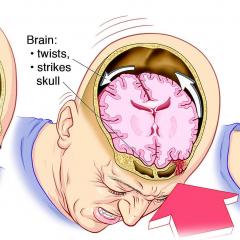Australian athletes have partnered with scientists at The University of Queensland to support research into the effects of concussion.
The Queensland Brain Institute’s #nobrainnogame campaign will raise awareness of the dangers of concussion and emphasise the need for more brain imaging and testing, with the backing of high-profile athletes.
Campaign ambassadors include:
- Amanda Farrugia (AFLW)
- Andrew Swain (ARU, Fox Sports)
- Casey McGuire (NRL)
- Casey Dellacqua (Tennis)
- Catherine Murphy
- Charlotte Caslick (Women’s Rugby)
- David Croft (ARU)
- Geva Mentor (Netball)
- Jocelyn Bartram (Hockey)
- Jude Bolton (AFL)
- Justin Clarke (AFL)
- Meg Downie (AFLW)
- Nathan Grey (ARU)
- Nicola Barr (AFLW)
The #nobrainnogame campaign will also recruit participants for QBI’s Australian-first concussion study which tracks players in the days and weeks after a concussion.
QBI Director Professor Pankaj Sah said the aim is to develop a more reliable test for concussion by comparing biomarkers at different times following a head knock.
“The goal is to objectively and rapidly diagnose a concussion, providing clinicians with a quick screening tool to help them decide whether or not it’s safe for a player to continue on the field,” he said.
“Sport is a huge part of Australian life and there is an onus on the research community to work constructively with sport.
“By understanding more about concussion and knowing how much time athletes should take off to prevent further brain injury, we will help keep the community involved in sport and keep players safe.”
QBI’s concussion study involves taking saliva tests and baseline brain images of healthy athletes who play contact sports.
If they are concussed, they will be repeatedly scanned to closely observe changes in the brain.
Concussion is a mild traumatic brain injury caused by impact to the skull or body.
It can be caused by falls, assaults and car accidents, but is most commonly experienced in certain sports where players are at higher risk of being concussed than the general population.





